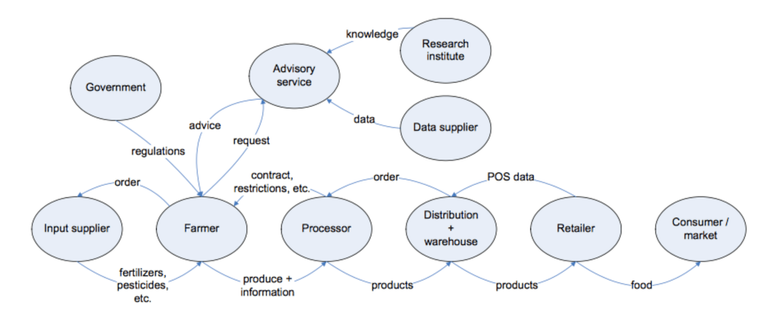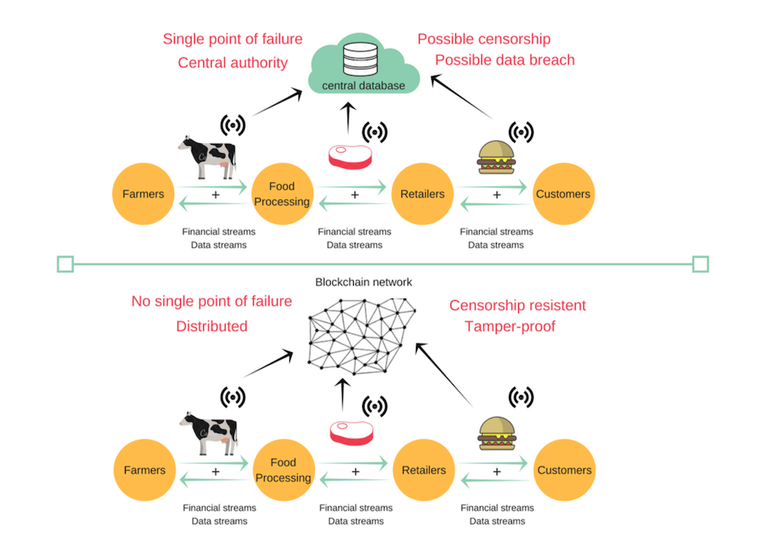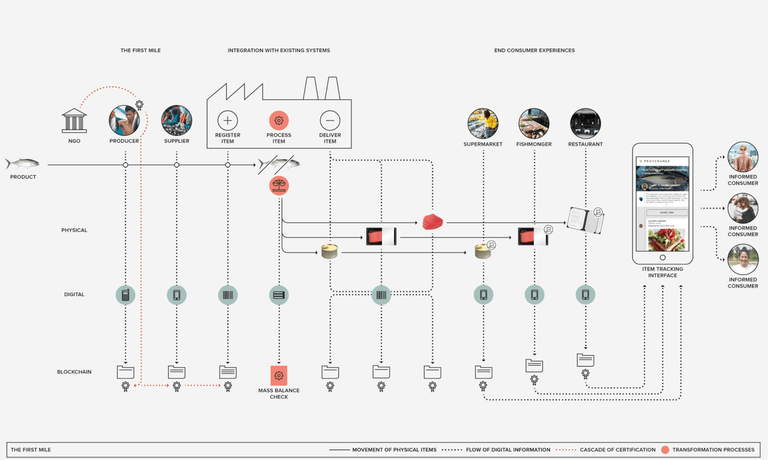The biggest trends in today’s agrifood systems are globalization, urbanization, and agro- industrialization. These factors are putting pressure on the organizations involved in the food supply networks. Food supply chains have changed the way they function. If they were fully autonomous and independent of outside actors in the past, today they are moving towards globally interconnected systems with complex relationships. This radical change is not only technical but philosophical as well. The ways in which food is produced, processed or delivered are changing in a state where perishable food products can be shipped half way across the world in a very short timeframe at fairly competitive prices. Producers concentrate more on the international demand, instead of the local regions (Bukevicitute, Dierx, & Ilzkovitz, 2009).

Consumers and businesses have more trust in certified products and services. Most of the time these certificates are issued by independent third-party institutions which are centralized. Although EU regulations are assigning more responsibilities to food producers for ensuring food safety, these have not been optimal. Pushing for more regulations and restrictions is challenging small-sized businesses. Consumer awareness is rising with the level of education. Many companies are looking for certifications with the aim to prove the provenance of their products. There is misalignment of information between consumers and producers. Having a certificate placed on a package does not always guarantee the quality the product. The likelihood of catching unethically issued certificates lies in the government monitoring. In more corrupt governments such monitoring might not be optimal for the consumer side. The information asymmetry in the food supply business might play a role in marketing campaigns where companies might misinform consumers on certain qualities of their products. Labels such as fair trade and organic farming are difficult to monitor because the only way to detect fraud is by monitoring the internal processes of a company. Most of the time only public agencies are allowed to check internal processes. It is also time-consuming and costly to monitor each food supply chain. By knowing how difficult it is to detect fraud many companies take the risk and make false statements in their marketing knowing there is a very little chance of being caught. There is a need of automatic monitoring system which covers the whole supply chain and production processes. If every label needs to be checked by third parties, its reputation could be questioned by consumers (Friederike Albersmeier, 2009).
There are two types of certifications: by public companies or by private companies. Certificates might serve as a business to consumer marketing tool or as a business to business quality assurance (for example ISO 9000). Many suppliers see certification as an obligation and not as a quality management system. Suppliers might not be interested in providing the highest quality standards. As certification companies are big corporations with many employees, it cannot be assumed that each employee acts with the full responsibility when auditing. Agents might try maximizing their profits in forms of bribes. These practices are often seen in less developed countries as corruption levels are higher. Bad practices have been seen for example in China where textile suppliers systematically fooled the auditing companies. Lack of auditor training and corruption could lead to companies tricking the system. (Friederike Albersmeier, 2009)
With rising scandals on food quality and transparency, consumers are questioning the company practices. Often the most powerful party in the supply chain could influence smaller participants. Sharing data between parties is also a challenge in the industry. The operation could be made difficult, and costs might rise exponentially. A centralised shared data silo was seen as the only solution to the problem of making data traceable and accessible for all parties. The development of the blockchain technology presents a new approach of storing data and keeping track of records. The blockchain could be seen as a single source of truth. The blockchain removes the need for centralised third parties such as certification agencies and enables individuals to audit the shared data. The blockchain provides certainty over past transactions without having to trust third parties. (Baker & Steiner, 2015)

Certification on the blockchain
Companies like Provenance have already developed blockchain based concepts for the food supply industry. According to Provenance there are six types of actors involved in the supply chain:
- Producers – actors producing the actual food
- Manufacturers – where the biggest transformation happens
- Registrars – public or private institution issuing unique identities to actors
- Standards organisations – these define under which conditions a certificate is obtained
- Certifiers – actual inspectors
- Customers
Each actor will have its digital identity. This identity could be publicly tied to his personality or pseudonymous (Baker J. a., 2015). Future implementation of blockchain technology would be able to deliver selective anonymity.
Certificates from third parties could be stored on the blockchain including the identities of the auditors and their employers. These certificates would be connected to the unique product ID which is associated with the company license number. All this data can be stored in a smart contract which could check the validity of the certificate on a monthly basis. If the certificate expires, the information will be immediately visible to the public. If in a later point in time and auditor or consumer detects a food quality issue he could pass the information along the supply chain and the cause of the problem would be found. If it were a certificate problem, it would be very easy to find out the auditor and the company behind him issuing the certificate (N.D., 2017).

References:
- Bukevicitute, L., Dierx, A., & Ilzkovitz, F. (2009). The functioning of the food supply chain and its effect on food prices in the European Union. European Commission, Directorate-General for Economic and Financial Affairs. European Comision.
- N.D. (2017, 7 25). Provenance. Retrieved 8 10, 2017, from provenance.org: https://www.provenance.org/news/technology/blockchain-certification/
- Baker, J. a. (2015, 11 21). Blockchain: the solution for transparency in product supply chains. Retrieved 6 6, 2017, from Provenance: https://www.provenance.org/whitepaper
- Friederike Albersmeier, H. S. (2009, January). The Reliability of Third-party Certification in the Food Chain: From Checklists to Risk- oriented Auditing. Food Control, 928ff.
Tables:
- Beulens A. / Wolfert S./ Scholten H./ Kassahun A. (n.d.):“Business Information Systems Integration: Based on Chained Web Services: Future in multi-dimensional agri-food supply chain networks.”, available: http://www.iiasa.ac.at/~marek/ftppub/Pubs/csm09/pres/beulens.pdf
- Own research
- provenance.org. (Provenance) Retrieved August 16, 2017, from Provenance: https://www.provenance.org/tracking-tuna-on-the-blockchain
Congratulations @kondor1030! You have completed some achievement on Steemit and have been rewarded with new badge(s) :
Click on any badge to view your own Board of Honor on SteemitBoard.
For more information about SteemitBoard, click here
If you no longer want to receive notifications, reply to this comment with the word
STOP@OriginalWorks
The @OriginalWorks bot has determined this post by @kondor1030 to be original material and upvoted it!
To call @OriginalWorks, simply reply to any post with @originalworks or !originalworks in your message!
To enter this post into the daily RESTEEM contest, upvote this comment! The user with the most upvotes on their @OriginalWorks comment will win!
For more information, Click Here! || Click here to participate in the @OriginalWorks sponsored writing contest(125 SBD in prizes)!!!
Special thanks to @reggaemuffin for being a supporter! Vote him as a witness to help make Steemit a better place!